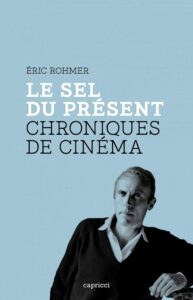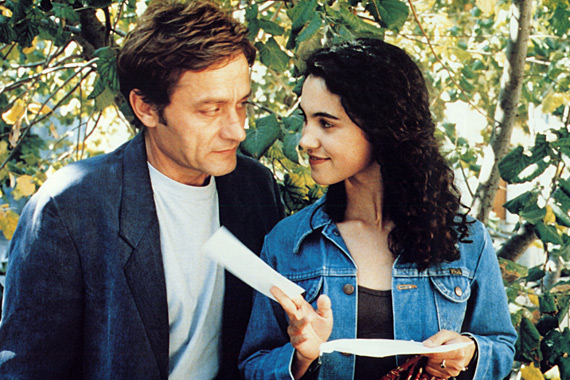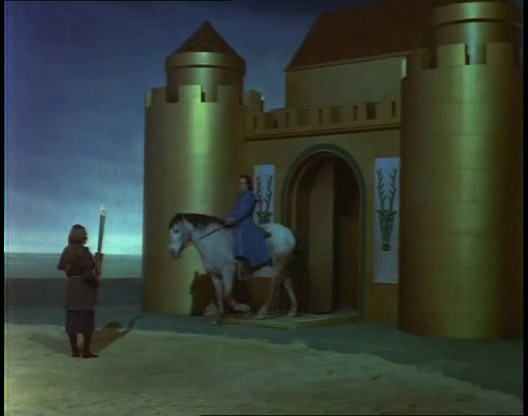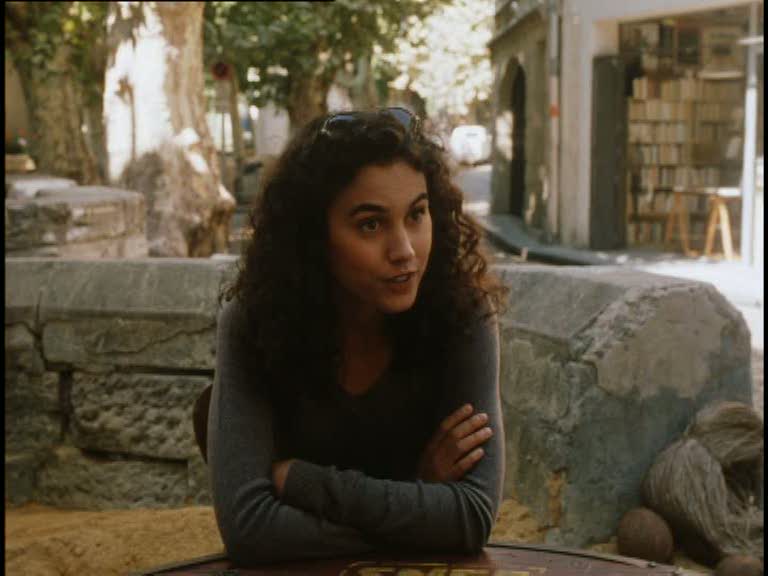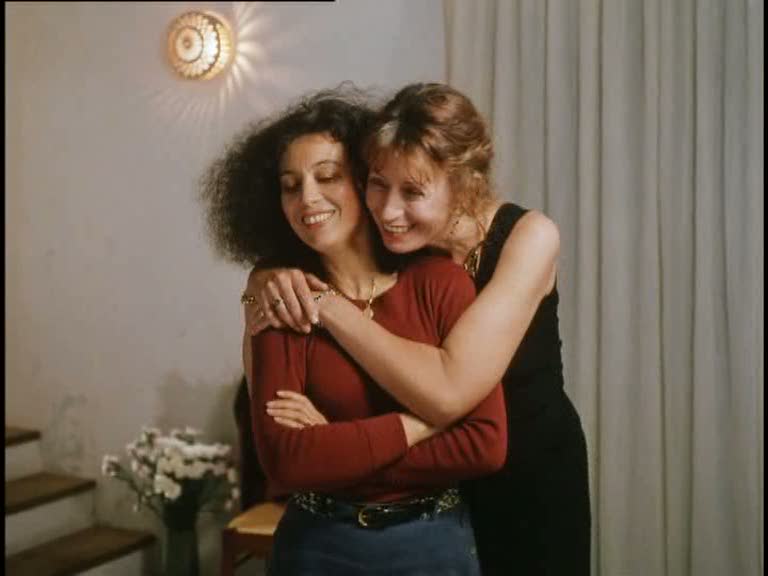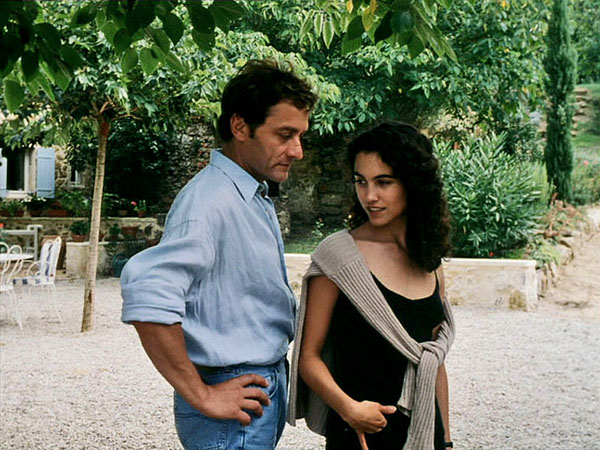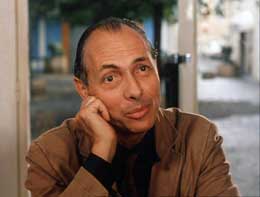Eric Rohmer died in early 2010 at the age of 89. (See Dave Kehr’s very fine obituary in the New York Times.) Although my support for his work was often guarded, I hope that I did justice to his importance in this August 20, 1999 piece for the Chicago Reader.
I was distressed more recently to read A.O. Scott assert about Rohmer, in an article about him in the New York Times, that “some aspects of late-20th-century life -– most notably, politics –- were absent from his palette”. This immediately made me think about L’arbre, le maire et la médiathèque(1993), one of Rohmer’s best and most neglected features, although, as Kent Jones subsequently noted on Dave Kehr’s blog, other Rohmer films with (direct or indirect) political content could also be noted. As usual, it appears that Scott is doing what many readers want from the Times‘ film writers: to assure them that their ignorance about certain matters is an “educated” ignorance, even if it isn’t. –J.R. [1/13/10] P.S. While I was in Paris early this month, I bought a hefty but relatively inexpensive new paperback, Le sel du present: Chroniques de cinema, collecting almost 200 of Rohmer’s reviews for the weekly Arts between 1948 and 1959. {7/27/23]
Autumn Tale Rating *** A must-see
Directed and written by Eric Rohmer
With Marie Rivière, Béatrice Romand, Alain Libolt, Didier Sandre, Alexia Portal, Stéphane Darmon, and Aurélia Alcaïs.
At 79, Eric Rohmer is obviously a master, though one might argue he was a master 30 years ago when he made My Night at Maud’s. If a part of me has resisted and sometimes even resented his mastery, this undoubtedly can be traced to a problem with realism that his work as a whole throws into relief. To put it crudely, why reproduce the real world when we have the thing itself? In his 1988 book about Rohmer, Australian critic G.C. Crisp summarizes Rohmerian realism: “The cinema is a privileged art form because it most faithfully transcribes the beauty of the real world. The real world is intrinsically beautiful because it is God’s handiwork. Any distortion of this, any attempt by man to improve on it, is indicative of arrogance and verges on the sacrilegious. According to this line of reasoning, beauty is a quality not of art but of the world, so art can never improve on reality; at best, subordinate to that reality, it can shine with a reflected glory. The director’s job is to open a window onto reality, to create a ‘transparent’ cinema which simply presents, with as little interference as possible, the beauty of the world…. “Such a degree of self-effacement on the part of the director constitutes an act of worship analogous to prayer.”
Along with Claude Chabrol, with whom he once wrote the first book-length critical study of Alfred Hitchcock in any language, Rohmer stands in opposition to the other critics-turned-filmmakers of the French New Wave in his absolute fidelity to the way people speak and to the quality of a particular place and time — specific regions, cities, towns, seasons, and times of day. For Jean-Luc Godard, Jacques Rivette, and the late François Truffaut, pursuing a particular mythology and metaphysics is an essential part of filmmaking. Chabrol pursues these things a little — deriving them most often from the mysteries and thrillers he frequently uses as sources — but Rohmer is far too interested in the real to go along with such hocus-pocus. The form that seems to interest him the most is the tale or the fable, conceived as an 18th-century form of crystalline elegance, and the iconography that engages him doesn’t refer to the sort of allegory he admires in the work of Hitchcock or F.W. Murnau (whose Faust was the subject of his dissertation) but to the particular way light falls across a familiar, everyday setting.
Maybe the implicit political conservatism of Rohmer’s realism has made me distrustful. Yet I confess my favorite of all his films might be described as the most reactionary (and the least realistic) — his 1978 Perceval le Gallois, a medieval musical that feels a bit like a western, and a cogent illustration of his stated conviction that a true preservation of the past ultimately adds up to a kind of modernity. I once asked Rohmer how he reconciled his realist aesthetic with the artificiality of a studio film like Perceval, and he answered in part by recalling André Bazin’s defense of Carl Dreyer’s The Passion of Joan of Arc as a realist work: that at least the dirt in the film was real. For a director whose sense of realism is more primitive than Bazin’s — though it’s obviously indebted to Bazin’s theorizing on the subject — it was an apt response. In Perceval, I would argue, the 12th century emerges as real, and this isn’t a compliment I’d make as readily about any other film with a medieval setting — Dreyer’s Passion, Carne and Prevert’s Les visiteurs du soir, Bergman’s The Seventh Seal, or Bresson’s Lancelot of the Lake. The merit of Rohmer’s realism in Perceval is that it brings something otherwise dead and forgotten to life — not because Rohmer’s imagination is especially rich but because he sees no alternative to his literalism, even if it makes some audiences laugh in disbelief. Nobody will laugh in disbelief at Autumn Tale (1998). The last and best of his “Tales of the Four Seasons,” it’s about the difficulties and pleasures of rediscovering love in middle age. Many of Rohmer’s recent features have been limited by their concentration on youth, which can make it difficult to tell some of them apart — a problem shared by some of the late films of Yasujiro Ozu (many of which are also named according to the seasons: Late Spring, The End of Summer, An Autumn Afternoon, etc). Yet Autumn Tale is nicely balanced between youth and middle age (Rohmer’s own present age group appears not to interest him at all).
I suspect that what interests Rohmer most of all is his actresses. That Isabelle (Marie Riviere), a town bookseller, and Magali (Béatrice Romand), a country wine grower, are both bumping middle age in Autumn Tale is probably less important than that this is Rohmer’s fourth film with Riviere and his sixth with Romand. His first film with Romand, Claire’s Knee, was made in 1970, and his first film with Riviere, Perceval, was made eight years later. To compound the associations, the two actresses appeared together once before, in one of Rohmer’s best films, the uncharacteristically semi-improvised 1986 Summer — the confusing American title given not to one of the “Tales of the Four Seasons” but to Le rayon vert (“The Green Ray”). Following both actresses in Rohmer’s work is not unlike following such actors as John Wayne, Maureen O’Hara, Victor McLaglen, and Ward Bond through the movies of John Ford — we grow up with them as they work through a succession of similar themes.
Isabelle and Magali, who live in the southern Rhone valley, have been best friends their whole lives. When the film opens, the happily married Isabelle is planning her daughter’s wedding, and Magali, a widow whose two children have left home, is debating whether to attend. Isabelle would like to find her friend a mate, but when she suggests that she place a classified ad in the local paper, Magali recoils at the idea. Eventually Isabelle places an ad of her own without telling Magali and winds up in effect screening Gérald (Alain Libolt) for her.
Meanwhile, Magali’s son Léo (Stéphane Darmon), a college student, is dating Rosine (Alexia Portal), who doesn’t take him very seriously but is strongly attached to his mother. She too hopes to find a match for Magali and tries to set something up with her ex-lover, philosophy teacher Étienne (Didier Sandre), who’s still somewhat smitten with her. Both of these awkward matchmaking plots finally come together on the day of the wedding.
The story develops in leisurely fashion, gathering momentum and purpose as it proceeds, until by the end you may feel like cheering. Some of the characters and relationships seem peculiarly, even quintessentially French: the propensity of French professors to become involved with their students makes the scenes between Rosine and Étienne almost archetypal; disapproving American viewers may be surprised at how much the precocious Rosine controls the romantic impulses of her mentor, who’s roughly twice her age. (She seems equally in control of Léo, whom she clearly regards as a stopgap.)
Perhaps the most charming thing about Autumn Tale is the degree to which Rohmer finds a happy meeting ground between his own brand of middle-class realism and the kind of Hollywood cinema he once celebrated as a critic. One wonders how accidental it is that Libolt resembles Charles Boyer or that a good deal of the plot hinges on the potentially disastrous consequences of impersonation and misrecognition, both classic Hitchcockian themes. The crafty way the storytelling keeps us guessing about everything — not only events and outcomes, but motives and concealed feelings — suggests that realism is as much a construction as any other sort of fiction. As Bazin put it, referring to Jean Renoir: “There is no point in rendering something realistically unless it is to make it more meaningful in an abstract sense. In this paradox lies the progress of the movies.” What I think I like most about Autumn Tale is that it’s just as abstract as Leo McCarey’s Love Affair, and every bit as real.

